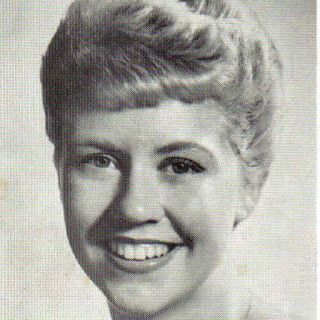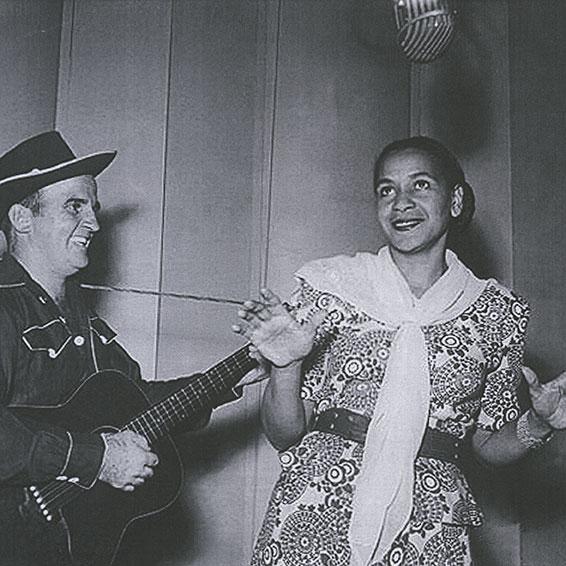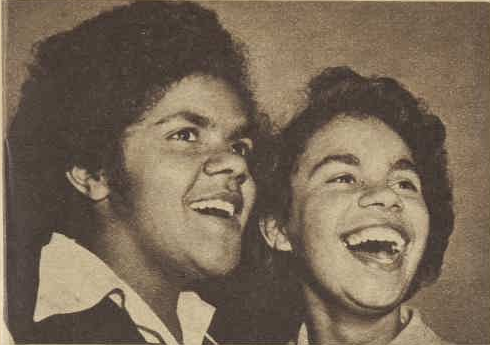Rock’n’Roll:
The end of the second World War war meant the return of men, which in-turn meant that many women who had experienced a semblance of independence now had to return to their previous roles as stay-at-home mother and devoted wife.
But the new decade that was the 1950s, also brought a new style of music with it - rock’n’roll. Early rock’n’roll
was dominated by white males who copied black American groups playing rhythm
and blues. At first even white males faced hostility from white mainstream
society for playing this "Devil's music". Consequently, it was almost
impossible for any woman to play in this industry. But by the
late 1950's, rock’n’roll music had become more acceptable to mainstream society.
The image of the male performer changed from that of a bad boy ‘greaser’ or Australian ‘bodgie’
to that of the clean cut ‘bobby soxers’ like Bobby Vee, and 'virginal-looking' female musicians and performers were
allowed to participate on stage and in recordings.
Judy Cannon (pictured)
was one of Australia's earliest female rockers. In the mid-1950's, Judy Cannon was part of the seismic transitions in the music business that began in the late 1950s and continued into the 1960s. She sang with one of the countries first rock and roll bands before moving into television and club performances. Judy started
singing at the Coburg Town Hall, Melbourne, at what were supposed to be 50:50
dances. African American singers like Laverne Baker influenced Judy and in 1958 she
teamed up with The Thunderbirds, one of Melbourne’s first real rock and roll bands. Together they made regular appearances at the big dances of the day at venues like Preston Town Hall, Arcadia and Earls Court when it opened in St Kilda, and she eventually cut a couple of records with them too.
The Barry Sisters were also popular in the mid - 1950s, while Betty McQuade started her career in the late 1950's by winning a talent quest in Brisbane. She later recorded "Blue Train" and "Midnight Bus". Beverley Dick was a Country and Western and Rock'n'Roll singer in the 1950s who went on tour in 1959 with Johnny O'Keefe, the Delltones, the Dee Jay's, Malcolm Arthur and Lonnie Lee.
Indigenous Female Singers:
Indigenous singer Georgia Lee (pictured), (born Dulcie Pitt), became an identity in the jazz and blues clubs of Sydney and Melbourne in the 1950s where she was named Melbourne's number 1 female singer and performed with well-known bands including the Graeme Bell Jazz Band. After making her mark overseas, Georgia Lee returned to Australia and toured with American jazz legend Nat King Cole in 1957. She is credited with being the first Indigenous Australian artist to record blues songs with her album, Georgia Lee Sings the Blues Down Under (1962)
Duo, Olive McGuiness and Eva Bell (pictured) were a harmony duo active in the 1950s and are largely considered to be the first Indigenous Australians that recorded popular songs in a commercial studio. As cousins, they spent their childhood in Cowra then Sydney amongst the Wiradjuri people of NSW. It was here they met the composer of their music, Grace O’Clerkin (1901–1964).
Olive and Eva’s first big break was in 1955, as finalists on Australia’s nationwide radio program, 'Amateur Hour'. Shortly after, they released their first record. Their second and last release was in 1956.
Other Australian female Singers/Musicians/Acts of this era include: Laurel Lea, Sally Sloane.
Interesting Fact: Numerous
female singers right up to the present day, have found their break into the music
industry through entering a talent quest.
Photo Credits:
Judy Cannon, The Australian Women's Weekly, c.1959 - Source: Discogs
Georgia Lee, 1949 - Source: NFSA
Olive McGuiness and Eva Bell, The Australian Women’s Weekly, 1956 - Source: NFSA





